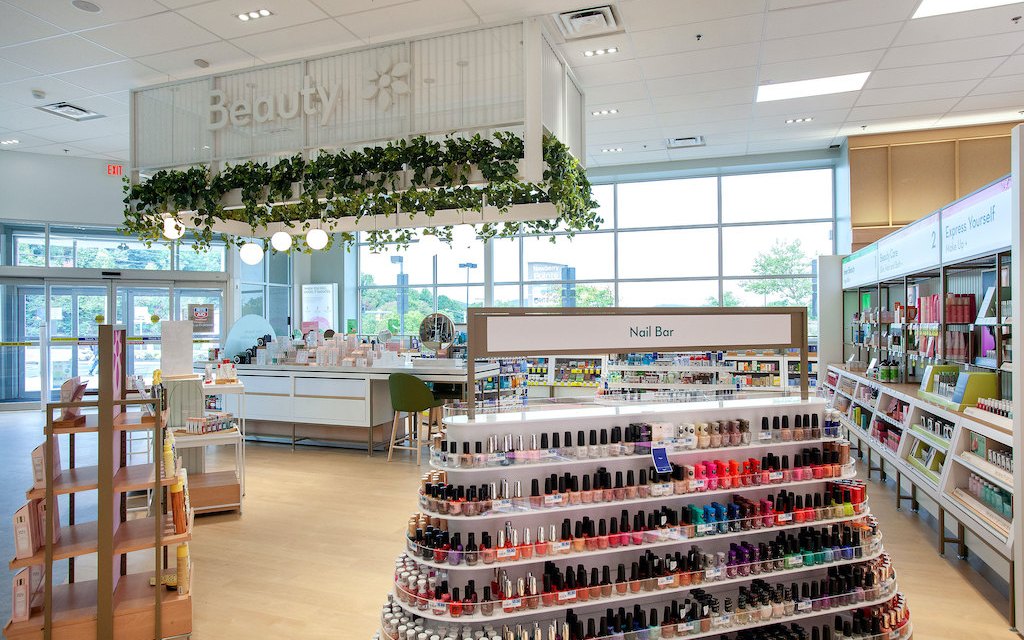How Rite Aid’s rebranding takes cues from digital competitors

The modernization of the brick and mortar brick drugstore is well underway.
This month, Rite Aid announced an upcoming overhaul of its locations, in hopes of rehabilitating its margins and customer traffic. The retailer, which has over 2,400 locations mainly on the East Coast, launched a pilot “store of the future” program to kickstart the process. Rite Aid’s strategy includes a new logo redesign, a shift toward holistic health merchandise and a store redesign that re-centers pharmacists.
While the pandemic certainly shifted priorities when it was designated an essential store, Rite Aid’s rebrand had been planned prior to the coronavirus outbreak. In recent years, Rite Aid has struggled to keep up amid an ever more competitive field. As of the end of last year, the pharmacy chain had over $3 billion of debt and was already in the process of unveiling a “turnaround.”
The strategy is yet another example of national pharmacies attempting to stay relevant in an increasingly digitized world. For example, Walgreens recently announced it’s boosting its investment in e-commerce, including order ahead tools and converting some locations into fulfillment facilities. The company will also continue to offer delivery options with partners like Postmates.
Rite Aid’s move is also in line with the industry’s increased focus on personalized health and wellness, said Florence Wright, senior retail insight analyst at Edge by Ascential. “Retailers in the health sector have been shifting their strategies from point-of-sale to point-of-care for some time,” she said. This is particularly true given the growing presence of online disruptors like Amazon, which competes with drugstores’ non-medication offerings, she said.
Rite Aid’s new focus on e-commerce fulfillment will also help better compete with convenient online services, namely Amazon — which acquired online pharmacy PillPack in 2019. For example, Rite Aid recently rolled out a new mobile app design, and has plans for better online shopping and in-store pickup capabilities. In May, it also launched a partnership with Instacart to help fulfill non-prescription items.
This latest move is also a way to stay relevant as the health space gets more crowded, thanks to entry by new direct-to-consumer wellness brands. “Store-based retailers are seeking to provide more holistic health and wellness services and experiences,” Wright explained, pointing to new programs like CVS Health Hubs and Walmart Health Centers. She also noted Walgreens’ ongoing format testings, including its shop-in-shop partnership with Birchbox.
Ad position: web_incontent_pos1
The digital drugstore category has exploded in the past few years, proving consumers have an appetite for drugstore alternatives. New York-based Capsule, for example, recorded $100 in revenue in 2019 and has plans to continue to expand nationally.
However, “delivery is just the beginning,” said Achal Patel, co-founder of DTC medicine and health essentials startup Cabinet. “What the industry is looking at is providing end-to-end care to draw customers in,” he said. The current layout doesn’t cater enough to most customers’ needs, beyond selling items like over-the-counter medications.
The root of the problem, he explained, is that for the past few decades, there has been “a lack of a feedback loop” between pharmacies and their customers, especially when it comes to placing emphasis on care. What digital services like Capsule have provided, and have had resonate with customers, is a direct connection with a pharmacist via chat or texting.
Aside from making pharmacists more accessible to customers, Rite Aid’s store redesign will also feature more up-to-date product assortments. As Patel noted, offering merchandise focused on natural, chemical-free ingredients is likely to resonate with younger and environmentally-conscious consumers. “Right now, there is a big shift toward organic, non-GMO and gluten-free health essentials,” he said.
Patel said that retailers like Rite Aid have several advantages, beyond just a physical footprint and greater supply chain access to national brands. “Their greatest strength is that they have pharmacists on the clock, ready to help customers,” he said. Placing a more front and center emphasis back on these caretakers, who are typically relegated to the back of the store, is a smart move, Patel said.
Ad position: web_incontent_pos2
Moving forward, drugstore retailers need to keep focusing on transforming digital, while also leveraging stores for tools like pickup and expert consultations, Wright said. “It’s becoming increasingly important given this year’s accelerated shift in spend towards online.”

